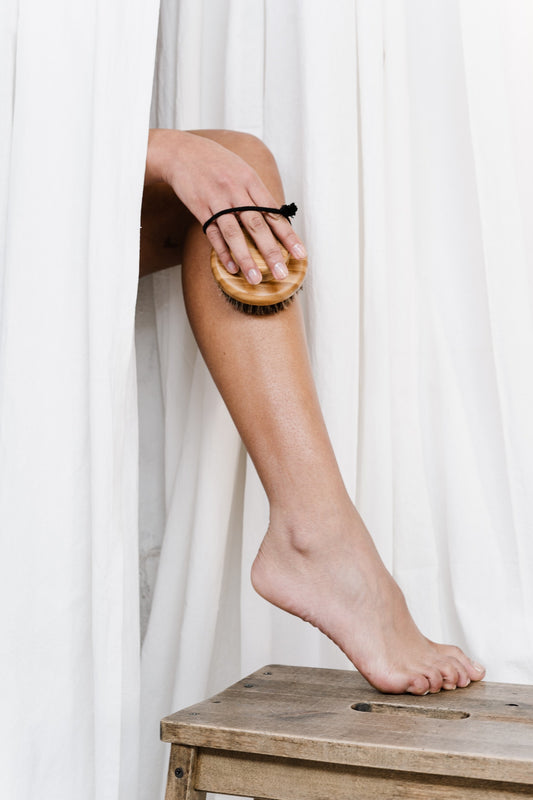How to apply knee pain
The knee is one of the most injury-prone joints in the body because it supports our body weight and helps us move. During intense physical activity, long periods of sitting, walking, or running, the knees are put under a lot of stress, which can lead to muscle fatigue, joint pain, and damage.

In such cases, the use of kinesiology sports tape is an effective form of treatment. Kinesiology tape, through the contact of the tape with the skin, can help reduce muscle fatigue, promote blood circulation, reduce pain and swelling, and relieve other symptoms. It increases the distance between skin and muscle by the retraction phenomenon after stretching, influences the direction of subcutaneous fascia tissue, creates sufficient permeability and blood circulation, and promotes lymphatic and blood circulation.

In this article, we will introduce several methods of sticking kinesiology tape on the knee. Come see if there is a method that works for you.
1- Method for stabilization of the knee joint:
This type of kinesiology tape taping on the knee is especially suitable for runners with old knee injuries. It uses the support of the tape to increase the stability of the knee without hindering the running movement. It is highly recommended!

2-Runner's Knee Relief Paste Method:
Runner's knee occurs when a section of fascia called the iliotibial band becomes tight or inflamed.
The main symptom of runner's knee is that the tightness of the outer thigh muscles causes pain in the upper half of the outer knee, which is the second most common cause of knee pain in runners.
The use of kinesiology tape can help alleviate the occurrence of runner's knee pain.

The anchor point is taped to the pain point on the outer thigh, the tape is applied to both sides with moderate tension, and 2-3 Y-shaped stickers are successively applied to the outer thigh and finally smoothed with the hands.
3- Assist the quadriceps femoris in exerting strength:
This patching method is suitable for long-distance runners, such as marathon runners, because most of the muscle force in long-distance runners is applied by the quadriceps of the thigh. The induced effect of the patch can not only increase muscle strength but also prevent fatigue cramps!

Turn the Y-shaped sticker upside down, starting at the root of the front of the thigh, and wrap the two legs of the Y-shaped sticker around the outside of the kneecap. Of course, do not forget to keep rubbing the kinesiology tapes.
4-Relieve tension in the inner and outer thighs:
Tension and pain in the inner and outer thighs are common problems among many runners. This method of taping before exercise can prevent sudden pain while running. This method can also be used to relieve pain after training.

In the future, we will continue to update taping methods for various knee problems. If none of the above methods are suitable for you or you do not know which method is suitable for you, you can contact us directly and we will be happy to help you.
Here you can find instructions on how to properly apply the kinesiology tapes.
Step 1: Clean the skin
Before you apply the kinesiology tapes, you need to do some preparations. First, you need to make sure that the skin around your knee is dry and clean. If there is sweat or oil on the skin, the kinesiology tape will not be able to stick. Therefore, the skin should be washed with soap and water before applying the tape, and the skin around the knee should be dried thoroughly before applying the ointment.
Step 2: Determine where you want to use the tape
Decide where you need the patch, usually on your knee's front, back, or sides. The purpose of using exercise patches may be to reduce muscle fatigue, relieve pain, or promote muscle recovery.
It is very important to find an appropriate location for the kinesiology tape. If it is placed incorrectly, optimal results cannot be achieved. For the knee, the best position is around the painful or uncomfortable area. Before applying the kinesiology tape, you can palpate the area of the knee to find the most painful area, and then choose a suitable position around that area.
Step 3: Apply the kinesiology tapes
Before you can use the kinesiology tapes, you need to decide where you want to apply the patch. This depends on where you feel the pain or discomfort. As a rule, the tape should be applied to the muscles around the knee, not directly on the joint. This will ensure that the patch works properly when you move. After you have determined where to apply the patch, you can begin applying the muscle patch. Before you apply the patch, you will need to cut it to the correct length. Make sure the patch fits snugly on your skin and does not have any wrinkles or air bubbles. If you want, you can wrap the patch with clear tape to make it stick better.
Step 4: Pay attention to the timing of the application
Follow the instructions on the patch to determine when you should apply it. Do not use the patch longer than prescribed, as this may cause skin irritation and other adverse reactions. Normally, the duration of the application is 1-3 days.



